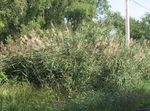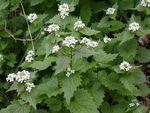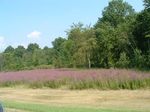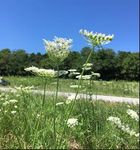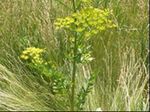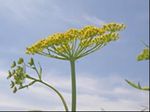NWCA Times - Winter 2021 - Nebraska Weed Control ...
←
→
Page content transcription
If your browser does not render page correctly, please read the page content below
NWCA Times – Winter 2021
The Nebraska Weed Control Association, 2807 West 2nd St., Grand Island, NE 68803
Message from the President of the NWCA
Hello every one, what a year we had in 2020. I am glad it is over with. So, let’s start 2021 off with the
coldest winter ever recorded. As I write this, my pickup temperature this morning was -30 degrees, I
would think that should kill every Noxious weed in Nebraska, but I bet it won’t. The groundhog did see
his shadow so let’s ride out the next six weeks and see what that brings us. We have set back the dates
on our Conference, so look on the calendar for those. We will have a one-day training for new weed
Superintendents in April so look on the web site for that. I know Rob will give you all a heads up on the
exact time and place where it is to be held. I have been out looking for Phragmites, you can really see it
now, it sticks out like a sore thumb. Most of mine has been in water ways, and along road sides of all
places. You should be seeing and hearing from your local FSA agency about this time, they are to have a
meeting with the local weed control in their county to meet their standards, according to law. I have
been getting out to local cooperatives to visit with them, and giving them some brochures and literature
on Noxious weeds. The one that gets the most attention is the brochure on Thistles of Nebraska, they go
like hotcakes. I always go back in May and give them some more. It looks like we got funding for our
grant again. I think we will need to have a zoom meeting with our Directors and weed management
areas to see when and where the money can be best be spent on control, at least lay out a game plan.
As with COVID-19 we will have to plan accordingly to what comes before us, I know the vaccines are on
the way, and I know we will get through this. Please be careful and take care of yourself. If anything else
comes up we will let you all know. Until we meet again. Your President, John Bebout.
Message from the Vice-President
“Duty and joy go hand in hand. Duty is there so you can continue to
pursue your happiness. And joy is there so that you have something
real to fight for”
- Dr. Gabrielle BurnhamThings were wrapping up nicely last fall after a season of fighting weeds. Work had brought routine and something familiar amid 2020’s constant turbulence. Come October, I was shipped off to the County Landfill due to staffing and Covid issues through the new year. I now appreciate and share what many of you have known for years, maybe even your whole career: wearing multiple hats at the same time and, most days, Weed Control taking a back seat to other duties as assigned. If Bruce Rumsey hadn’t retired, I’m sure that he’d appreciate the motivational quote from Star Trek above. If you don’t get that joke, just ask someone who has been around a while ;) 2021 promises to be another year where you can just about expect the unexpected to happen, just like last year. Texas freezing over?! Didn’t see that one coming and neither did they, apparently. Weed Superintendents are, I believe, some of the most well adapted of all County employees. I’m looking forward to melting snow and spring time and planning for another year. After my experience last year, I have a new appreciation for the work that we do, Weed Control, no matter how limited or full-time that work is. Truth be told I’m more of a Star Trek person than Star Wars fan. Star Trek is just regular folks, out there somewhere, being tested to their limits by outside forces, but surviving together and evolving nonetheless. Sounds a lot like Weed Superintendents. No doubt we’ll prove ourselves again this year. Vice-President Mike Reed Region 1 - Max Birkel Hello from frigid Region 1, looking forward to spring so we can get past these cold temperatures. Nothing wants to work when it gets this cold. Region 1 got together in Feb and it was great to see fellow Noxious Weed Superintendents as it has been a long time due to Covid. It was interesting to see that only one Superintendent has actually had Covid. We all need to continue doing a good job of social distancing and masking up. As a group none of us had our vaccination but everyone was looking forward to getting it. Many of us have family and friends that have been affected by Covid and praying for the day we can put it behind us. It’s always interesting to see what everyone is doing during these winter months. It’s a good time to go through your sprayers and do some of the maintenance that we do not have time for during the warmer months. Many of the Superintendents are busy working with Highway Dept pushing snow. Lyle Weber in Saline Co has a new to him spray truck that he is working on when he is not busy with zoning issues. Mike Reed had to fill in at scale house part time at the Landfill which was a new experience. Everyone would be surprised if they knew what is stored in your local landfill, I have had some experience with that. As a group everyone pretty much agreed that Upland Phragmites is Region 1 biggest problem this past year. Musk thistle was down but Leafy Spurge seemed to be on the up-swing. I know on a personal note, I have made it a goal to get out this winter to survey for Phragmites. Winter time is a great time to spot it and I have not had any problem finding it. We discussed the timing of control on Phragmites and I have decided to try earlier application this spring to see what kind of control I can get. Glen from Helena told us they have a new Adjuvant called DLZ that would be a good fit for Phragmites control that I am anxious to try.
We plan on meeting again at the Southeast Region Meeting on March 12 in Lincoln where we will try
to decide the future dates of Region 1 meetings. Due to Covid, Lower Platte Weed Management Area
has not met since fall of 2020. Five Rivers Weed Management has been having meetings this spring and
is putting together their plan for the upcoming year. Most of the Region 1 Superintendents are planning
on going to the NWCA Conference on July 19-21 in Columbus, NE. Hopefully we will see everyone there.
Till then take care!
Region 1 Meeting held at Butler County Highway DeptRegion 2 - Jimmy Petersen the new region president Good morning from Region II A few topics we discussed at our region meeting were: Scott Erthums’ new Canada Thistle rust project in Nebraska and upland phragmites and purple loosestrife. One weed superintendent said she had a landowner with a very sizable patch of loosestrife that would be put up for hay and then be fed to his cows on the same place. That is not getting ahead of it, but technically, controlling it. The plan in Garfield County this summer is to try and do a test plot on Spurge and another on Sulphur Cinquefoil. We have a couple spots of each that are viewable from the highway. Region 3- No Report
Region 4 Todd Boller Region Director Brrrr is the story for this week. Hopefully it gives you time in the office to prepare for the upcoming Spring season. Many of the Superintendents are busy getting chemical prices as well as other machinery prices and preparing for the upcoming Spring. And of course, many have been moving snow lately. We have been able to get together for a couple of Region meetings with masks and social distancing. Jeremy Brandt was able to share his presentation on Weed Mapper and we were able to discuss the upcoming challenges for the year. Clay Counties new Superintendent is Greg Schuck and he is getting in the mix fairly quickly with WMA and Region meetings. It will be Brian Pederson and Doug Eckhardt’s 2 nd season. Spring will be here before we know it and the plants will once again be growing. It is important to also be looking for the Watchlist weeds that come up early and to do control work when possible on those. That will help get a good idea of acres infested with those plants. One of the Watchlist plants that come early is Garlic Mustard. It has really shown up in the last couple of years in our area. When you have time, familiarize yourself with the plants on the Watchlist that come early. We look forward to the Annual Conference in July and the educational opportunity it provides along with the networking that takes place. Have a safe rest of the winter and see you all in July!
Region 5 - Dan Wordekemper-Director
Hello from Region 5. As you all know, not much activity has happened this Winter with Covid protocols.
To make matters worse, we are just getting through the polar vortex which has kept most people even
more isolated. Usually out here in western NE, we are either the warmest, or coldest in the state,
sometimes in the same day. In this case, the panhandle did not have the coldest temps, or the most
snow, NOT COMPLAINING. I hope everybody got their annual reports done on time. That being said, the
board of directors has decided to have our conference in July, hopefully things will be closer to normal.
That’s about it from region 5, stay warm, stay safe, and stay healthy.
Region 6- No Report
NWCA UPDATE
By Executive Director - Rob Schultz
Here we are in 2021 and the COVID-19 issue is still with us. This past year has been a trying
time for everyone. As always, we are making it through. Perseverance prevails. “If you get
knocked down, get back up, dust yourself off, and keep going.” This past year, I have been
working a lot with the NDA, NACO, NWCA B.O.D, and the NWCA Education Committee on the
NWCA trainings that need to take place for the weed control superintendent’s continuing
education requirements. As for moving forward in 2021, the NWCA will be offering two trainings
and NACO will be offering one. So that means that there will be only three opportunities to get
your CEU’s in 2021. The NWCA Conference will be in Columbus on July 20-21, the NWCA Fall
Training will be in Kearney on November 3-4, and NACO will be December 8-9 in Kearney.
Make plans to attend!! There will be a new superintendent training in Kearney on April 14th for
new superintendents. It will be by invite only. If you are new and have not received an
invitation, please contact myself or Mitch Coffin for more information. This time of year is a great
time to be working on the NWCA Weed Mapping Program called Weedmapper. If you have not
used it in the past, last year’s reports can be entered and you can learn how the program works.
Also, this is the time of year to be out scouting for new infestations of phragmites and creating a
database of those infestations for future mailings to those folks. Here at the NWCA Home
Office in Grand Island, I have an assortment of educational materials: brochures, weed watch
magazines, thistle guides, weed ID guides, and weed books. Please stop by or get a hold of me
if you are in need of anything. If you are in need of Weed Free Forage Hay Tags this year, let
me know and I will mail some out to you. If you have any questions about the NWCA feel free
to get ahold of me at any time. The office phone number is 308.385.5097. Thank you and Stay
Safe!Celebrating Nebraska Invasive Species Awareness Week By: Allison Zach, Nebraska invasive Species Program Coordinator, Email: azach3@unl.edu Did you know February 22-28, 2021 has been proclaimed by our Governor as Nebraska Invasive Species Awareness Week? That week is also National Invasive Species Awareness week. There are some exciting webinars you maybe interested in attending to celebrate that week. The Nebraska Invasive Species Program and Nebraska Game and Parks Commission will be doing a webinar on various invasive species topics February 22- 26 at 10:00 AM each day. These webinars are free but you need to preregister here: https://events.unl.edu/ne-invasive-species- program/upcoming/ for each webinar you want to attend. The topics will be: Introduction to Invasive Species, Invasive Plants, Invasive Wildlife, Invasive Aquatics and Invasive Insects. We will be recording these webinars and they will be available on the Nebraska Invasive Species Program’s website: https://neinvasives.com/. There is also a great webinar series lined by the National Invasive Species Management Association (NAISMA) for February 22-26. You can checkout the topics and speakers here: https://www.nisaw.org/nisaw-2021/. National Invasive Species Awareness Week is usually a week where invasive species experts travel to Washington D.C. to present invasive species concerns to legislators. Due to the pandemic this year NAISMA is engaging those folks using this webinar series. I encourage you to attend any that are of interest to you as there are some great speakers lined up! I was elected to the NAISMA Board for a 3 year term through 2023 and I am currently serving on the biological control, legislative and Play Clean Go committees. I look forward to learning more about NAISMA’s invasive species outreach and management tools I can pass onto you where applicable. New this year is NISAW Part II which focuses on invasive species outreach and education. So stay tuned for May 15-22, 2021 for more invasive species webinars. I will post such events on my website: https://neinvasives.com/. If you would like any brochures, field guides or give away items (i.e. koozies, magnets, stickers) please contact me and I can mail them to you. You can find the printed items I have available here: https://neinvasives.com/field-guides-
NATIONAL INVASIVE SPECIES AWARENESS
WEEK(NISAW) February 22-28, 2021
National Invasive Species Awareness Week is an international event to raise
awareness about invasive species, the threat that they pose, and what can be
done to prevent their spread. Go to www.NISAW.org for more information.
Representatives from local, state, federal, and regional organizations discuss
legislation, policies, and improvements that can be made to prevent and manage
invasive species.
Promotion of national and local legislative actions
Tools and resources for communicating with policy makers
Webinar series: all webinars start at 1pm Central.
o Monday, February 22nd: Invasive Species Management Priorities
o Tuesday, February 23rd: Federal Agency Updates
o Wednesday, February 24th: Aquatic Nuisance Species
o Thursday, February 25th: Plant Health
o Friday, February 26th: Show Me the Money!
A series of virtual webinars are planned online from February 22-26, 2021 and
sponsorship opportunities are available. From May 17-23, 2021, partners host
local events to remove invasives and educate elected officials, decision makers,
and the public on how they can help to stop the spread of invasive species and
protect communities. NISAW is managed by the North American Invasive
Species Management Association (NAISMA). We hope you make NISAW your
own. Nobody knows your community’s invasive species challenges and potential
solutions like you do. Share your success with the hashtags #NISAW and
#InvasiveSpecies and tag us @InvasiveSpeciesWeek on Facebook. Why should
elected officials care about invasive species? National Invasive Species
Awareness Week Toolkit 2 Invasive species impact everyone. When not
monitored or controlled, invasive species can cause harm to our economy,
environment or human health. The term "invasive" is used for aggressive species
that grow and reproduce rapidly, displace native species, and cause major
disturbance to the areas in which they are present. Invasive species, if left
uncontrolled, can and will limit land and water use now and into the future. The
longer we ignore the problem the harder and more expensive the battle for
control will become. Thankfully, there are solutions. By learning about invasive
species and participating in events across the nation, elected officials and the
general public can work together to solve invasive species issues at local, state,
tribal, regional, international and national scales. Through education, legislation,
and getting out there to stop the spread of invasive species in the nation’s lands,
waterways, and everything in between, we can create positive outcomes in
habitats. Every year NISAW aims to protect natural ecosystems from invasive
species for the benefit of everyone.NEW PLANT ADDED TO THE WATCHLIST Wild Parsnip (Pastinaca sativa L.) Wild parsnip is an invasive plant that originally came from Europe and Asia. It was brought to North America by European settlers and grown as a root vegetable. Over time, it escaped from cultivation, and is now common throughout the US Description Wild parsnip is an aggressive, monocarpic perennial plant that germinates from seed, spends the first year or more as a rosette, eventually bolts to a height of 4 – 6 feet into a mature plant in the second year or later, flowers June through late August, sets seed, and dies. Habitat Wild parsnip invades along road and rail rights-of-way. It is also found invading a variety of disturbed landscapes including trails, natural areas, pastures, forest and field margins, waste areas, unmaintained gravel pits, and idle lands. It can tolerate dry, mesic, or wet soils, but does not grow in shaded areas. Means of spread and distribution This plant spreads primarily seeds. Seeds remain viable in the soil for several years. Impact Wild parsnip is highly invasive and if ignored can spread rapidly, developing into large monocultures that replace native animal and plant habitat. It reduces the quality of agricultural forage crops and can negatively impact livestock if ingested. The plant sap contains toxic chemicals that are activated by sunlight and can cause serious burns and blisters to human skin after contact.
Management
A sound management plan of foliar herbicides, mowing or digging is necessary to manage this
species and will take several years of commitment to ensure that the population has decreased
significantly and is not a serious problem.
Hand pulling is not recommended as the sap is toxic to human skin. Small numbers of plants
can be removed by hand if using gloves and clothing to protect the skin from sap exposure.
Toxicity
Wild parsnip causes phytophotodermatitis when skin comes in contact with plant sap in the
presence of sunlight, it can cause severe rashes, blisters, and discoloration of skin. Appropriate
protective clothing including gloves, long sleeves, and long pants should be worn and direct
contact with the plant should be avoided. If sap comes in contact with skin, avoid exposure to
sunlight, immediately wash skin with soap and water, and seek medical attention.
Wild parsnip is on Nebraska’s Invasive Plants Watch List and its spread being monitored.
NEW PLANT ADDED TO THE WATCHLIST
Queen Anne’s lace (Daucus carota L.)
Wild carrot, Bird’s nest
Invasive? Edible? Both?
Queen Anne’s lace is a white, flowering plant and is often invasive, native to Europe and
southwest Asia. It earned its common name from a legend that tells of Queen Anne of England
(1665-1714) pricking her finger and a drop of blood landed on white lace she was sewing.
Belonging to the carrot family, Queen Anne’s lace is a biennial that is also known as wild carrot.
Early Europeans cultivated Queen Anne’s lace, and the Romans ate it as a vegetable. Americancolonists boiled the taproots, sometimes in wine as a treat. Interestingly, Queen Anne’s lace is high in sugar, second only to the beet among root vegetables. Distinguishing Features The Queen Anne's lace flower resembles lace, and oftentimes the flower has a solitary purple dot in the center. In addition, the root smells like carrots! Flowers Queen Anne’s lace flowers have a flat-topped white umbel, sometimes with a solitary purple flower in the center. These flowers bloom from late spring until mid-fall. Each flower cluster is made up of numerous tiny white flowers. The flower cluster start out curled up and opens to allow pollination. The cluster then rolls itself shut again, like a reverse umbrella when it goes to seed at the end of the season. Habitat Queen Anne’s lace is found in fields, meadows, waste areas, roadsides, and disturbed habitats. They are very hardy and thrive in a dry environment. Edible Parts Using first year Queen Anne’s lace plants are recommended. Roots are long, pale, woody, and are finger-thin and are used in soups, stews and in making tea. First year leaves can be chopped and tossed into a salad. Flower clusters can be ‘french-fried’ or fresh flowers can be tossed into a salad. The aromatic seed is used as a flavoring in stews and soups. Toxicity Skin contact with the foliage of Daucus carota, especially wet foliage, can cause skin irritation in some people. It may also have a mild effect on horses. Queen Anne’s lace was recently added to the Nebraska Invasive plant Watch List to be monitored. It is known to be very aggressive, especially in roadsides. Watch for this invader on your property.
You can also read

